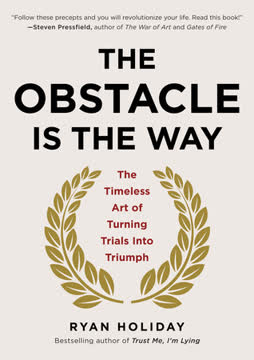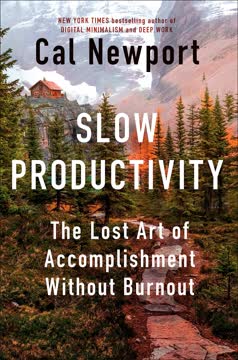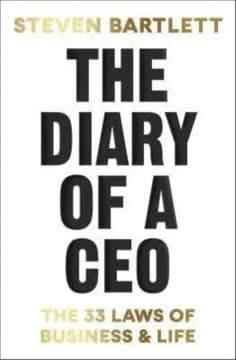Key Takeaways
1. Corporate boards face an existential crisis in a rapidly changing world
Corporate boards, like corporations, will face an existential crisis if they do not change with the times.
Boards must evolve or perish. The 21st century presents unprecedented challenges for corporate boards, including rapid technological change, shifting societal expectations, and economic uncertainty. Boards that fail to adapt risk becoming irrelevant or ineffective in guiding their companies through this turbulent landscape.
To survive and thrive, boards must:
- Embrace a more assertive and proactive role in shaping company strategy
- Diversify their composition to include a wider range of perspectives and expertise
- Develop a deeper understanding of emerging technologies and their potential impacts
- Balance short-term pressures with long-term value creation
- Engage more directly with shareholders and other stakeholders
Boards that successfully navigate these challenges will be better positioned to ensure their companies remain competitive, innovative, and socially responsible in an increasingly complex global environment.
2. Boards must actively shape company strategy, not just approve it
Reimagining this process could mean that board members work on the company strategy parallel to management, during separate and concurrent working sessions.
From rubber-stamping to co-creation. Traditionally, boards have primarily reviewed and approved strategies proposed by management. However, this approach is no longer sufficient in today's fast-paced business environment. Boards must take a more active role in shaping company strategy to ensure long-term success.
Key steps for more strategic board involvement:
- Conduct separate strategy sessions independently of management
- Develop alternative strategic proposals to compare with management's plans
- Engage in robust debate and discussion of strategic options
- Focus on long-term trends and structural risks, not just short-term performance
- Seek additional third-party information to complement management's perspective
By taking a more hands-on approach to strategy, boards can provide valuable insights, challenge assumptions, and help companies navigate complex challenges more effectively.
3. CEO selection should prioritize ethics and values alongside performance
A more assertive board could alter its recruitment process so as to place a prospective CEO's ethics and values at the very heart of its evaluation, equal in importance to financial performance.
Character matters as much as competence. In light of recent corporate scandals and growing public scrutiny, boards must place greater emphasis on a CEO candidate's moral compass and ethical standards during the selection process. This shift reflects the increasing importance of corporate culture and social responsibility in today's business landscape.
Strategies for evaluating CEO ethics and values:
- Incorporate specific metrics to gauge a candidate's values and decision-making processes
- Ask probing questions about past ethical dilemmas and how they were handled
- Assess a candidate's track record on social and environmental issues
- Consider how well the candidate's personal values align with the company's mission and culture
- Implement more rigorous background checks and references focused on character and integrity
By prioritizing ethics and values alongside performance, boards can help ensure that their companies are led by individuals who will navigate complex moral and social issues responsibly.
4. Boards need to diversify and adapt to address emerging challenges
The most effective boards will be those that populate their ranks with specialists and people who are knowledgeable about the specific shifts and trends most likely to affect corporations in the years ahead.
Diversity of expertise is crucial. As companies face increasingly complex challenges, boards must evolve to include a wider range of skills, experiences, and perspectives. This diversity goes beyond traditional measures like gender and ethnicity to encompass expertise in emerging areas such as technology, geopolitics, and sustainability.
Key areas for board diversification:
- Technology and digital transformation expertise
- Environmental, social, and governance (ESG) knowledge
- Geopolitical and global economic insights
- Cybersecurity and data privacy experience
- Expertise in emerging markets and non-traditional business models
By broadening the range of expertise on their boards, companies can better anticipate and respond to future challenges, capitalize on new opportunities, and navigate an increasingly complex business landscape.
5. Cultural oversight is a critical board responsibility in the 21st century
Boards are increasingly expected to make judgment calls on matters of morality, fairness, and ethics involving worker advocacy, pay equity, gender and race parity, data privacy, and the inevitable advances in AI and bioengineering.
Culture shapes corporate destiny. In today's socially conscious business environment, boards must take a more active role in overseeing and shaping company culture. This includes addressing a wide range of ethical and social issues that can significantly impact a company's reputation, employee engagement, and long-term success.
Key cultural oversight responsibilities for boards:
- Establish and monitor ethical guidelines and corporate values
- Oversee diversity, equity, and inclusion initiatives
- Address issues of pay equity and worker advocacy
- Guide the company's approach to data privacy and AI ethics
- Ensure alignment between corporate culture and business strategy
By taking a more proactive approach to cultural oversight, boards can help their companies navigate complex social issues, build trust with stakeholders, and create sustainable long-term value.
6. Short-termism threatens long-term value creation and board effectiveness
Boards must determine whether their companies will be able to survive in a new world order where the liberal, market-capitalist construct is replaced.
Long-term thinking is essential. The pressure to deliver short-term results can lead boards and management to make decisions that sacrifice long-term value creation. This myopic focus poses a significant threat to companies' ability to innovate, invest in the future, and adapt to changing market conditions.
Strategies to combat short-termism:
- Implement longer-term incentive structures for executives and board members
- Focus on long-term value metrics in addition to quarterly financial results
- Engage with long-term oriented investors and communicate the company's long-term strategy
- Invest in innovation and R&D despite short-term pressures
- Consider transitioning to alternative corporate structures that prioritize long-term thinking
By resisting the pressures of short-termism, boards can help their companies build sustainable competitive advantages, invest in innovation, and create lasting value for all stakeholders.
7. Technological disruption demands boards become more tech-savvy
Ultimately, boards must oversee these technological transitions by ensuring that their companies absorb new technologies and implement the best and most modern practices to maximize efficiency and mitigate risks.
Tech literacy is no longer optional. As technology continues to transform industries and business models, boards must develop a deeper understanding of technological trends and their potential impacts. This requires not only adding tech-savvy members to the board but also ensuring that all directors have a baseline level of technological literacy.
Key areas of technological focus for boards:
- Artificial intelligence and machine learning
- Cybersecurity and data privacy
- Digital transformation and e-commerce
- Emerging technologies (e.g., blockchain, IoT, 5G)
- Automation and its impact on workforce planning
By improving their technological expertise, boards can better guide their companies through digital transformations, identify new opportunities, and mitigate technology-related risks.
8. The global war for talent requires innovative board approaches
As corporations have begun to focus on greater female board representation, they have also looked to add ethnic minorities and to ensure that diverse ideas and thinking are represented on the board.
Talent is the ultimate competitive advantage. In an increasingly knowledge-based economy, attracting and retaining top talent is critical for long-term success. Boards must take a more active role in overseeing talent strategy and ensuring their companies can compete in the global war for talent.
Innovative approaches to talent oversight:
- Champion diversity and inclusion initiatives at all levels of the organization
- Oversee the development of robust leadership pipelines and succession planning
- Encourage investment in employee training and development programs
- Monitor emerging workforce trends (e.g., remote work, gig economy)
- Ensure competitive compensation and benefits packages that attract top talent
By prioritizing talent strategy at the board level, companies can build more resilient, innovative, and adaptable organizations capable of thriving in a rapidly changing business environment.
9. Rising investor activism is reshaping board-shareholder dynamics
Boards should expect to devote more time and attention to keeping the majority of their shareholders happy and dissuading them from moving their investment capital to private companies.
Shareholder engagement is crucial. The rise of activist investors and increasingly vocal institutional shareholders is forcing boards to rethink their approach to investor relations. Boards must be more proactive in engaging with shareholders, addressing their concerns, and clearly communicating the company's long-term strategy.
Strategies for effective shareholder engagement:
- Develop a comprehensive investor relations strategy at the board level
- Engage in regular, direct communication with major shareholders
- Address ESG concerns proactively and transparently
- Clearly articulate the company's long-term value creation strategy
- Be prepared to respond to activist campaigns and proxy fights
By fostering stronger relationships with shareholders and addressing their concerns proactively, boards can build trust, reduce the risk of activist interventions, and ensure continued support for the company's long-term strategy.
10. De-globalization poses new risks boards must navigate strategically
As power continues to move away from multilateral organizations—such as the EU and WTO—and devolves to national governments, global corporations will likely find it harder to maintain effective government relations across different countries.
Adapting to a fragmented world. The trend towards de-globalization, protectionism, and economic nationalism presents significant challenges for multinational corporations. Boards must guide their companies in navigating this increasingly complex and fragmented global landscape.
Key considerations for boards in addressing de-globalization:
- Reassess global supply chains and consider localization strategies
- Develop contingency plans for potential trade barriers or geopolitical conflicts
- Monitor regulatory changes across different jurisdictions
- Consider restructuring operations to create more autonomous regional units
- Evaluate the potential impact of capital controls and currency fluctuations
By anticipating and preparing for the challenges of a de-globalizing world, boards can help their companies maintain resilience, adaptability, and competitiveness in an increasingly uncertain global environment.
Last updated:
FAQ
What’s How Boards Work: And How They Can Work Better in a Chaotic World by Dambisa Moyo about?
- Insider’s guide to boards: The book offers a comprehensive look at how corporate boards operate, their structure, and their evolving responsibilities in today’s complex world.
- Focus on reform and adaptation: Moyo draws on her experience to show why boards must modernize to address economic, technological, and social disruptions.
- Broader societal impact: The book argues that well-governed boards are crucial not just for companies, but for society at large, as they shape corporate behavior and accountability.
Why should I read How Boards Work by Dambisa Moyo?
- Unique boardroom perspective: Moyo provides firsthand insights from serving on global boards, revealing the realities of high-stakes decision-making.
- Demystifies corporate governance: The book clarifies the misunderstood roles and responsibilities of boards, making it valuable for executives, investors, and the public.
- Actionable advice for reform: Readers gain practical guidance on improving board effectiveness, diversity, and accountability in a rapidly changing environment.
What are the key takeaways from How Boards Work by Dambisa Moyo?
- Boards must evolve: Effective boards are proactive, diverse, and technologically savvy to meet 21st-century challenges.
- Expanded board responsibilities: Modern boards oversee not just financials, but also culture, ethics, social, and environmental issues.
- Long-term focus is critical: Moyo stresses the dangers of short-termism and advocates for embedding long-term thinking into board strategy and oversight.
What are the main responsibilities of corporate boards according to How Boards Work by Dambisa Moyo?
- Setting company strategy: Boards shape and approve long-term strategic direction, balancing short-term pressures with future goals.
- CEO oversight: They hire, evaluate, and, if necessary, replace the CEO, ensuring leadership aligns with company needs and values.
- Safeguarding culture and ethics: Boards monitor corporate culture, ethics, and values, addressing issues like diversity, inclusion, and social responsibility.
How does Dambisa Moyo define the ideal board structure and membership in How Boards Work?
- Balanced size and composition: Effective boards typically have around twelve members, mixing executive and independent directors.
- Diversity and expertise: Boards should include a range of skills—financial, technological, geopolitical—and reflect gender, racial, and experiential diversity.
- Term and age limits: Many boards set term and retirement limits to ensure renewal, while regular assessments help maintain effectiveness.
How do boards set and oversee company strategy according to How Boards Work by Dambisa Moyo?
- Structured reviews: Boards hold annual and quarterly meetings to discuss, approve, and monitor strategic plans.
- Macro and micro analysis: They consider external trends (economic, regulatory) and internal data (financials, operations) to inform decisions.
- Managing uncertainty: Boards must make judgment calls amid unpredictable risks, requiring adaptability and a long-term outlook.
What challenges do boards face in CEO hiring and firing as described in How Boards Work by Dambisa Moyo?
- Complex selection process: Choosing a CEO involves thorough vetting, balancing internal and external candidates, and can take years.
- Balancing trust and oversight: Boards must trust the CEO but retain authority to challenge or remove them if necessary.
- Ethical and performance dilemmas: Boards navigate public scrutiny, legal issues, and company culture when making leadership changes.
How does How Boards Work by Dambisa Moyo address the importance of diversity and inclusion on boards?
- Business case for diversity: Diverse boards are linked to better financial performance, innovation, and risk management.
- Ongoing challenges: Women and minorities remain underrepresented, and efforts to improve diversity face resistance and concerns about tokenism.
- Strategies for progress: Transparent recruitment, quotas, mentorship, and linking diversity to executive compensation are among the recommended practices.
What role does technology expertise play on boards according to How Boards Work by Dambisa Moyo?
- Critical in tech-driven sectors: Boards in competitive industries need members with deep technology knowledge to guide strategy and investments.
- Continuous learning required: Rapid tech changes mean expertise can quickly become outdated, so ongoing education or advisory support is essential.
- Enhances decision-making: Technology-savvy directors help boards evaluate innovation, cyber risks, and digital transformation initiatives.
How does Dambisa Moyo in How Boards Work describe the impact of de-globalization and the global war for talent on boards?
- De-globalization challenges: Boards must adapt to more localized, protectionist markets, which complicate supply chains and increase operational costs.
- Talent shortages: The shrinking pool of skilled workers, especially in STEM, raises recruitment costs and threatens business models.
- Strategic adaptation: Boards may need to decentralize hiring, invest in training, and consider regional board structures to stay competitive.
What are the key social, cultural, and ethical issues boards must address according to How Boards Work by Dambisa Moyo?
- Pay and gender equity: Boards face pressure to address CEO-to-worker pay gaps and achieve gender parity, requiring systemic changes and inclusive cultures.
- Broader societal responsibilities: Issues like mental health, environmental sustainability, and ethical dilemmas are now part of board oversight.
- Cultural oversight: Boards must embed and monitor corporate values, using tools like surveys and audits to ensure alignment with societal expectations.
What are the best quotes from How Boards Work by Dambisa Moyo and what do they mean?
- On decision-making difficulty: Barack Obama’s quote highlights that boards handle the toughest, most complex decisions that others cannot resolve.
- On board effectiveness: “When boards work well, they are a thing of beauty. When they don’t, the results can be ugly,” underscores the high stakes of governance.
- On corporate purpose: Larry Fink’s call for companies to serve all stakeholders reflects the shift from shareholder primacy to broader accountability that boards must embrace.
Review Summary
"How Boards Work" offers insights into corporate board operations, addressing challenges like diversity, executive compensation, and adapting to technological changes. Readers found it informative for understanding basic board functions, but some criticized its lack of depth and practical examples. The book explores how boards navigate risks, make decisions, and balance shareholder interests with societal demands. While some praised its accessibility, others felt it lacked substantive insights and relied too heavily on general observations. Overall, it serves as an introductory guide to corporate governance in a changing world.
Similar Books










Download PDF
Download EPUB
.epub digital book format is ideal for reading ebooks on phones, tablets, and e-readers.





